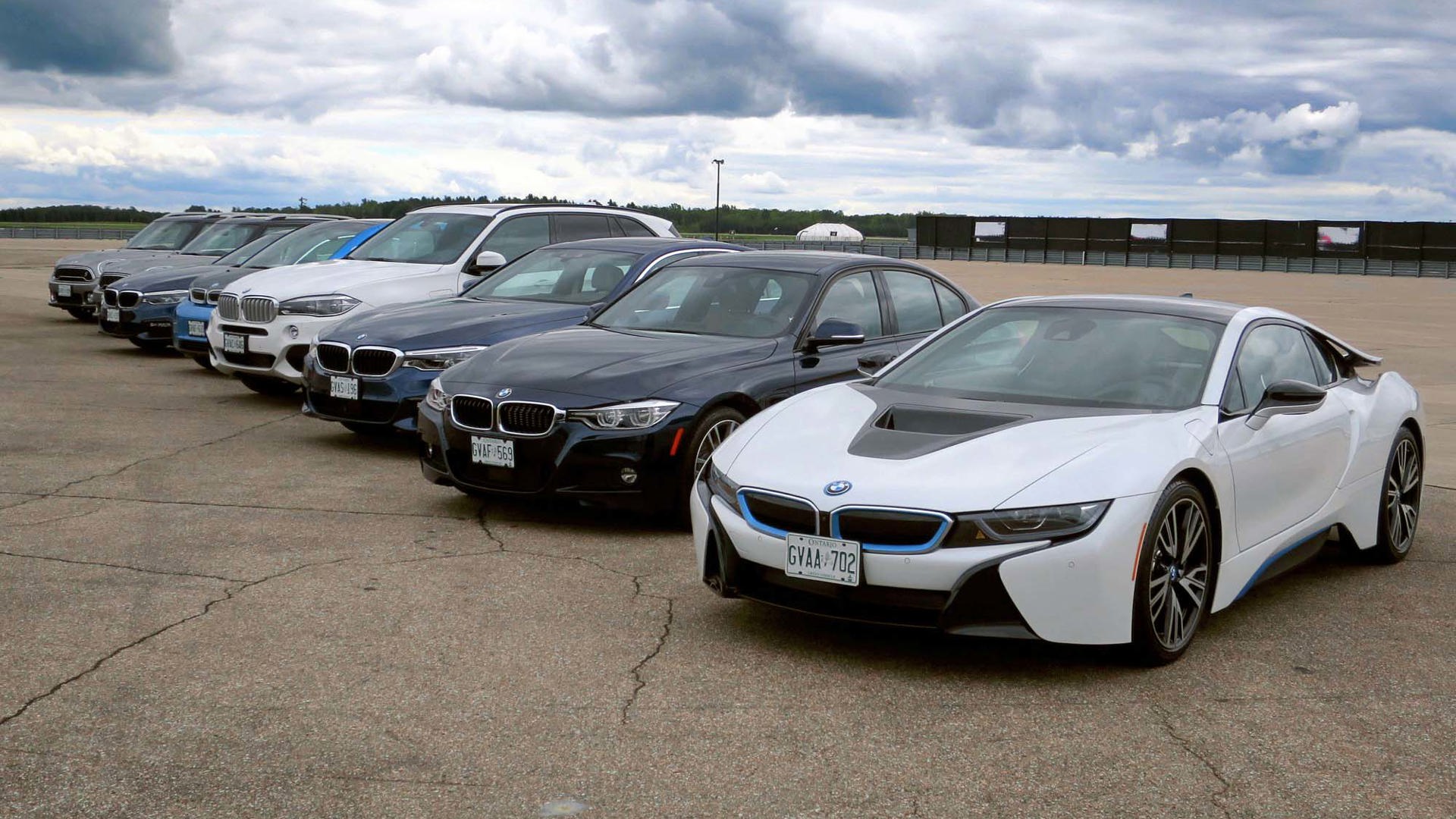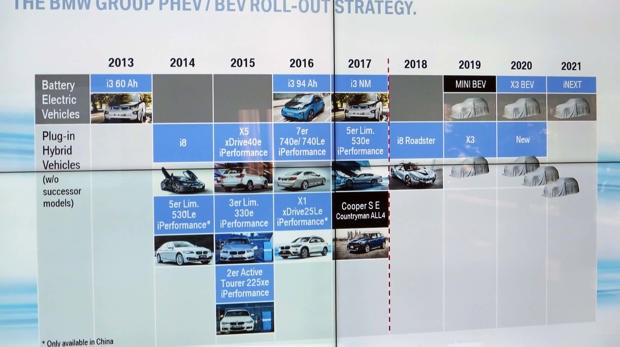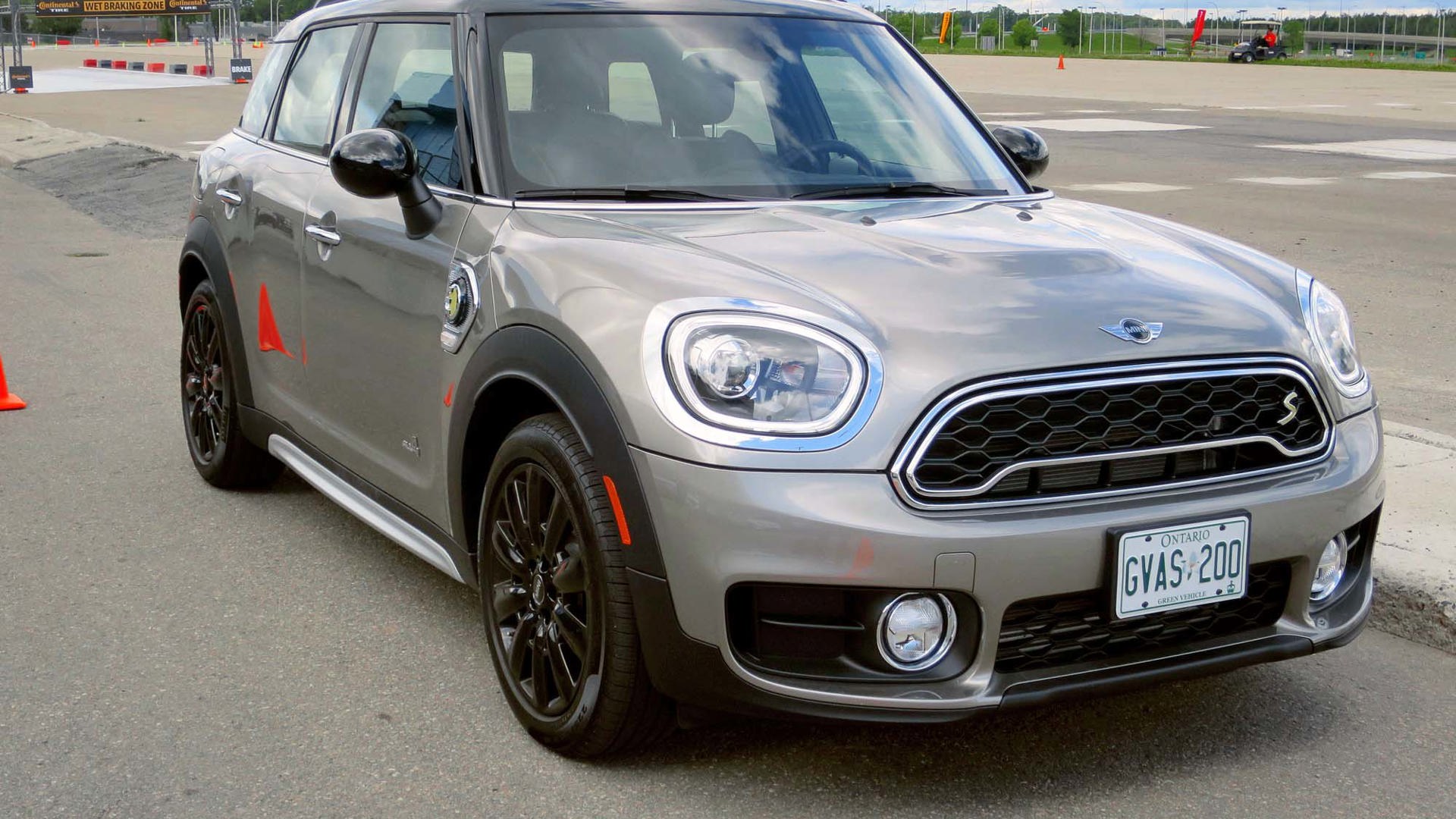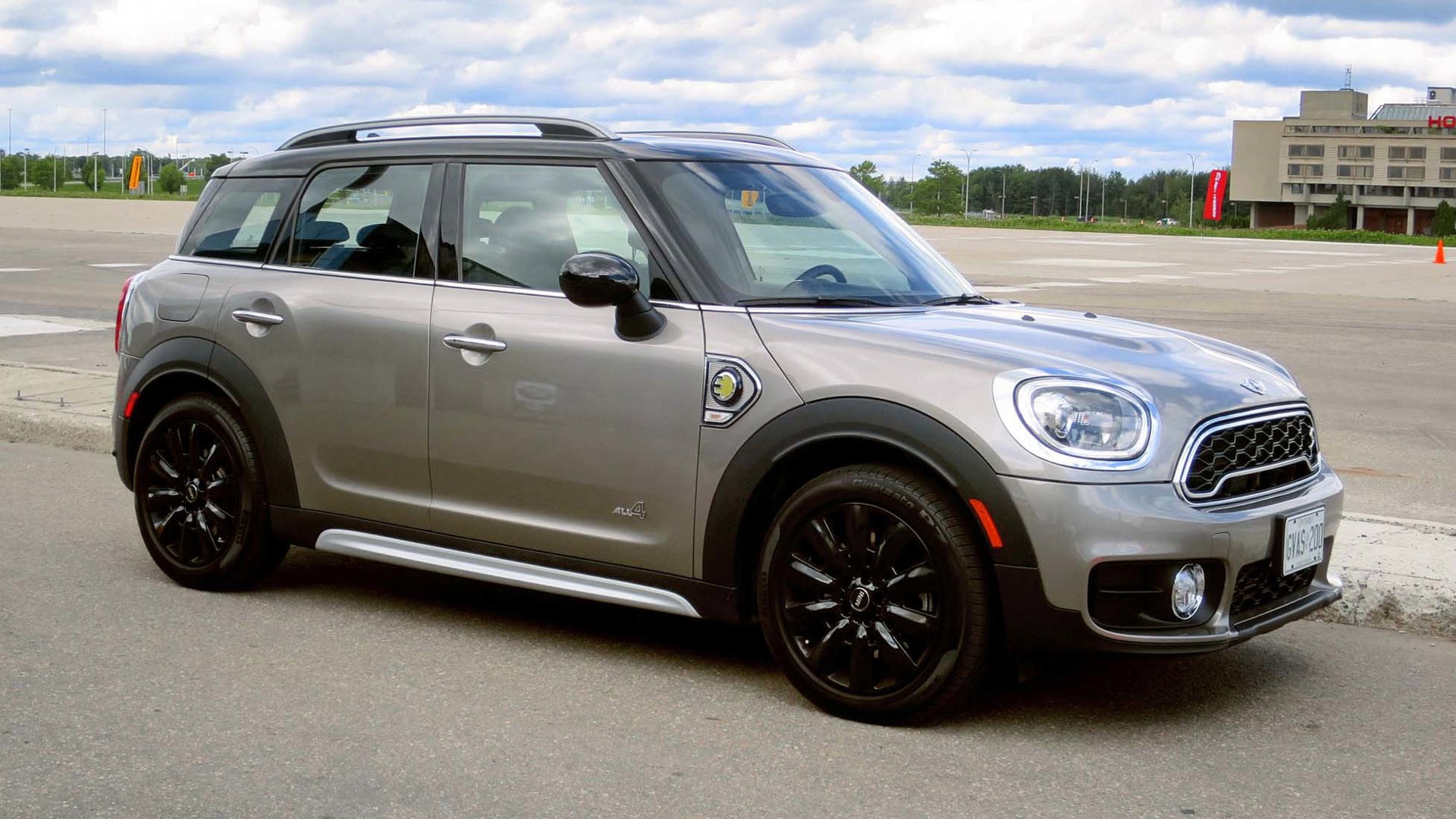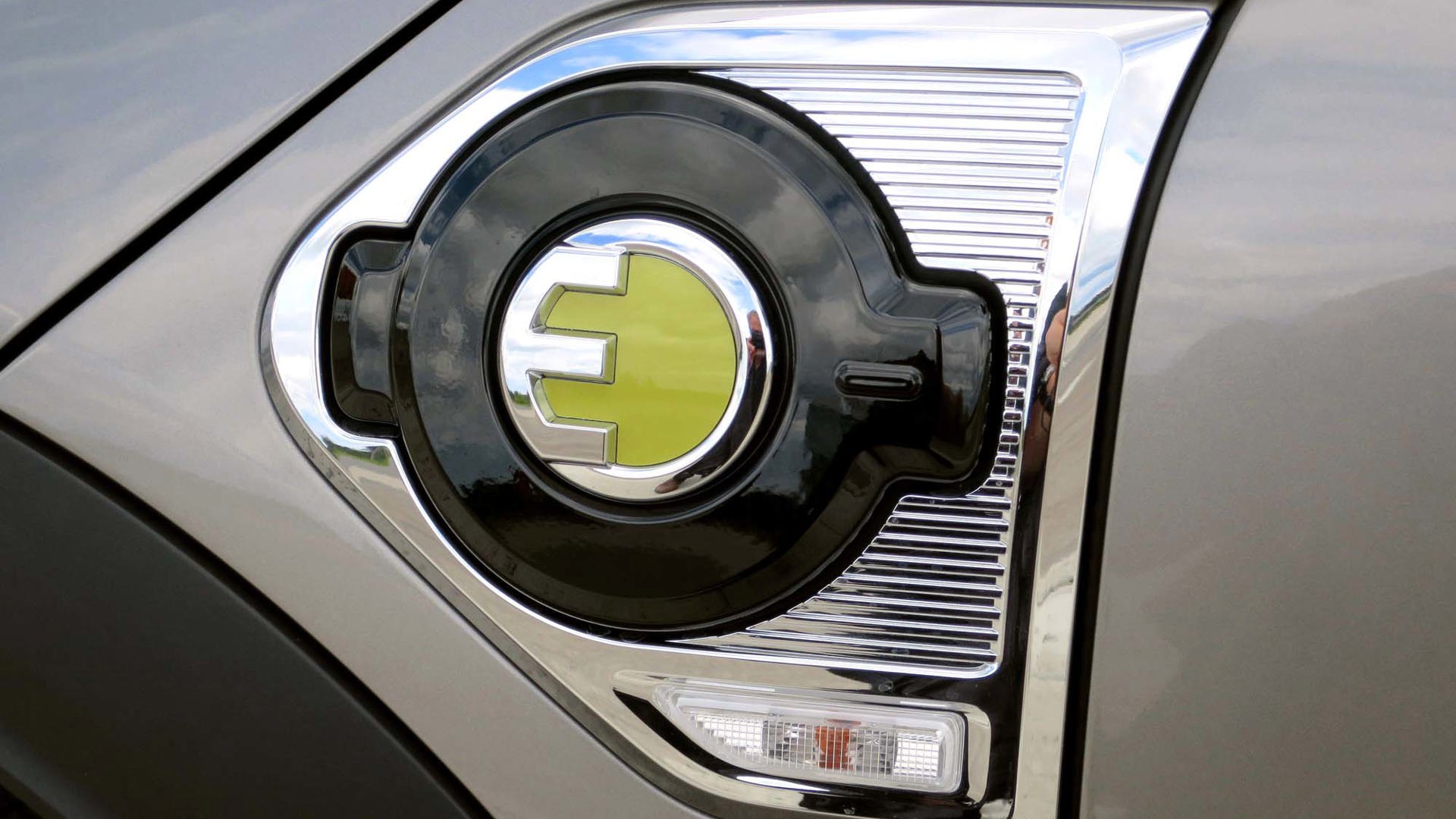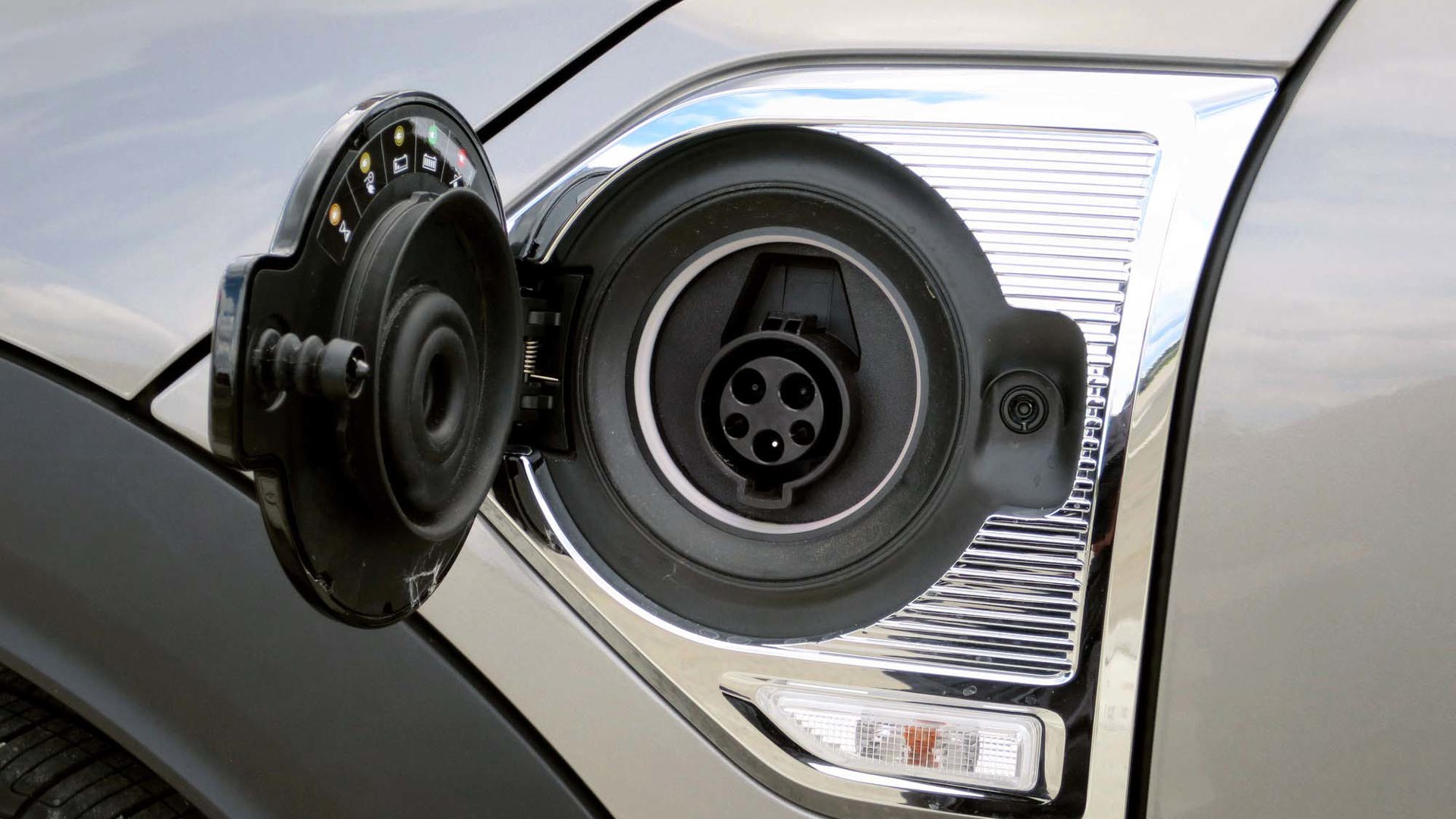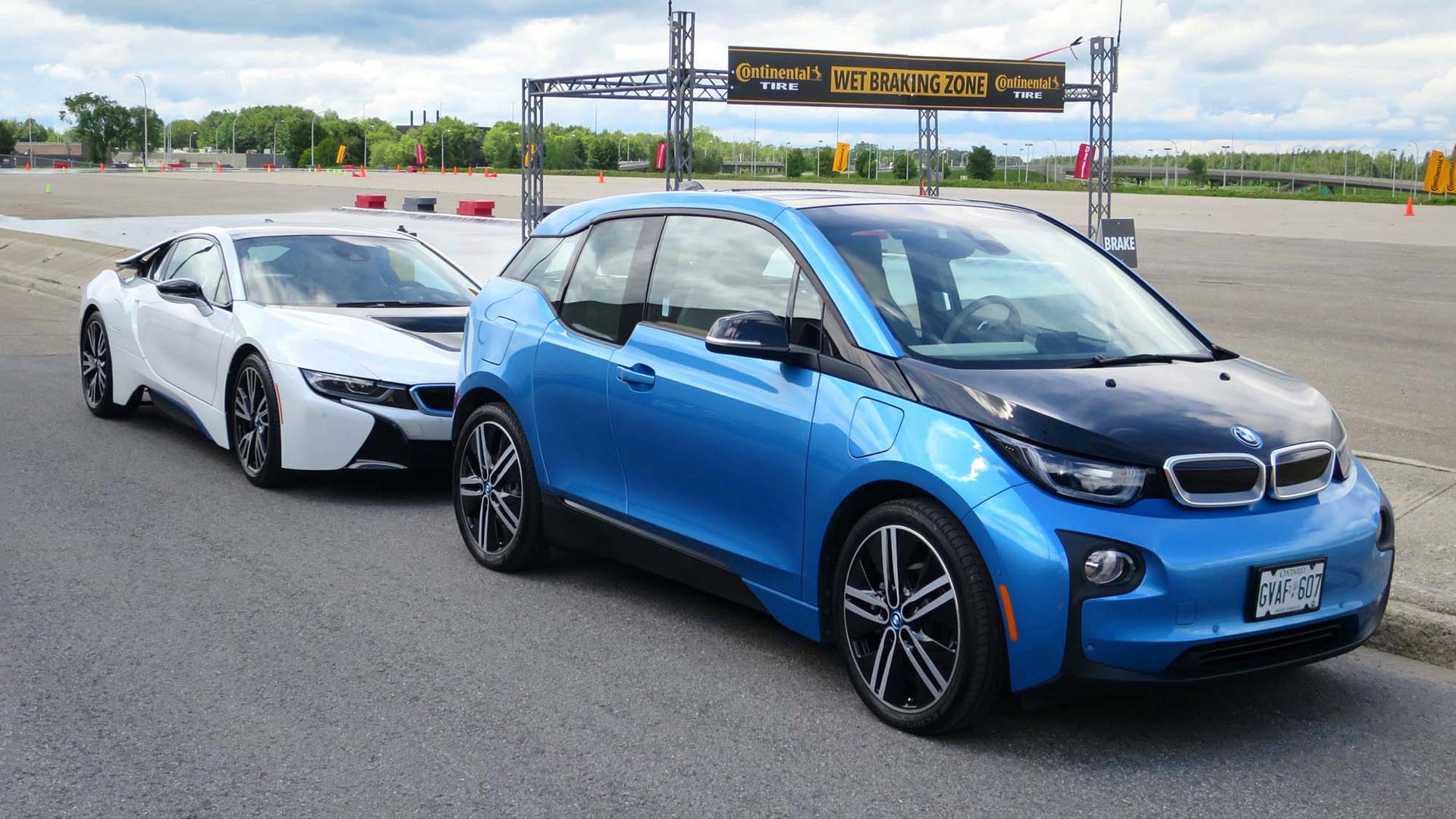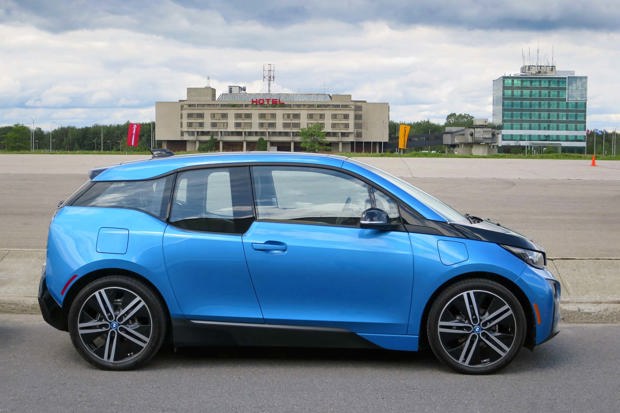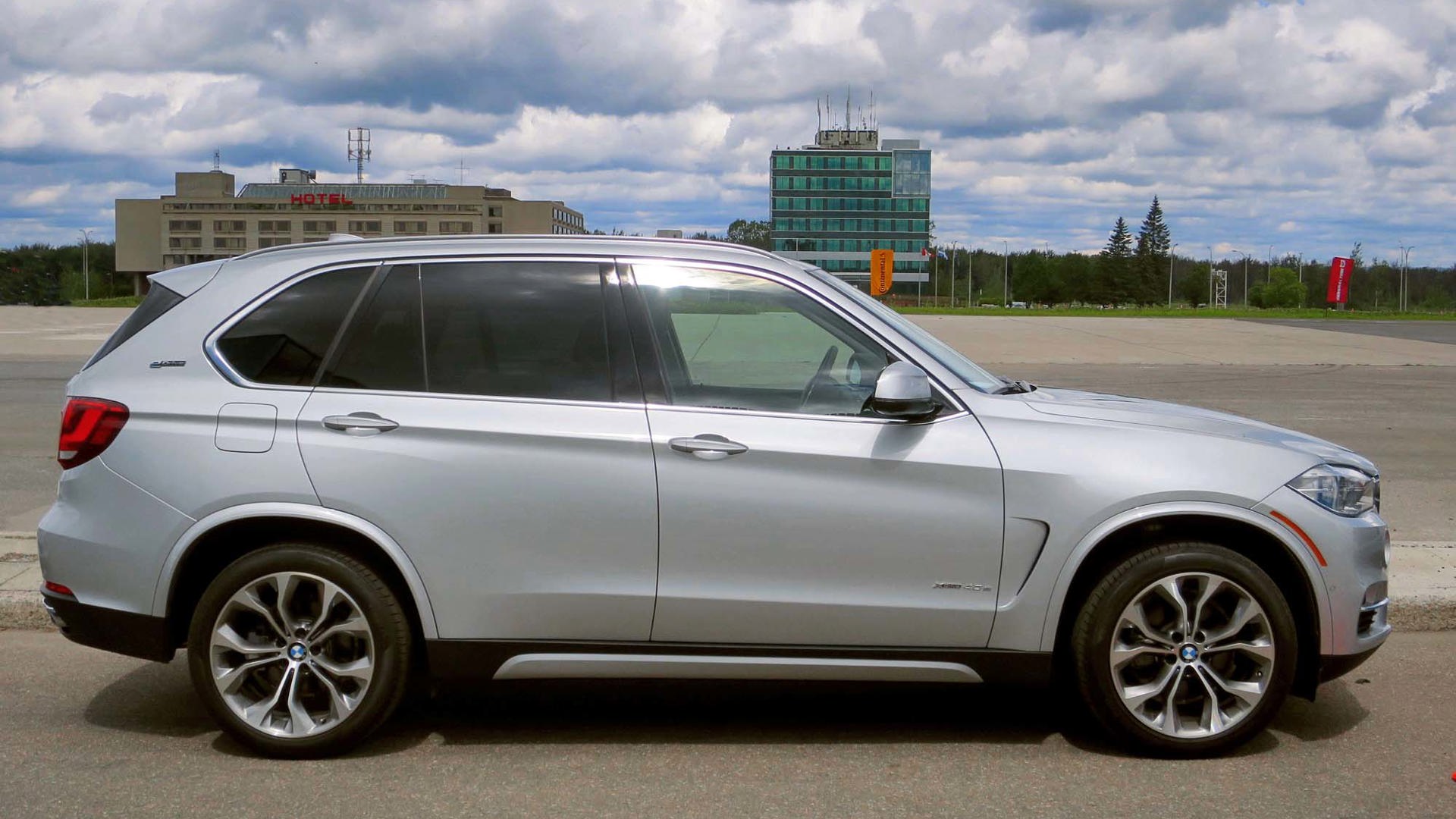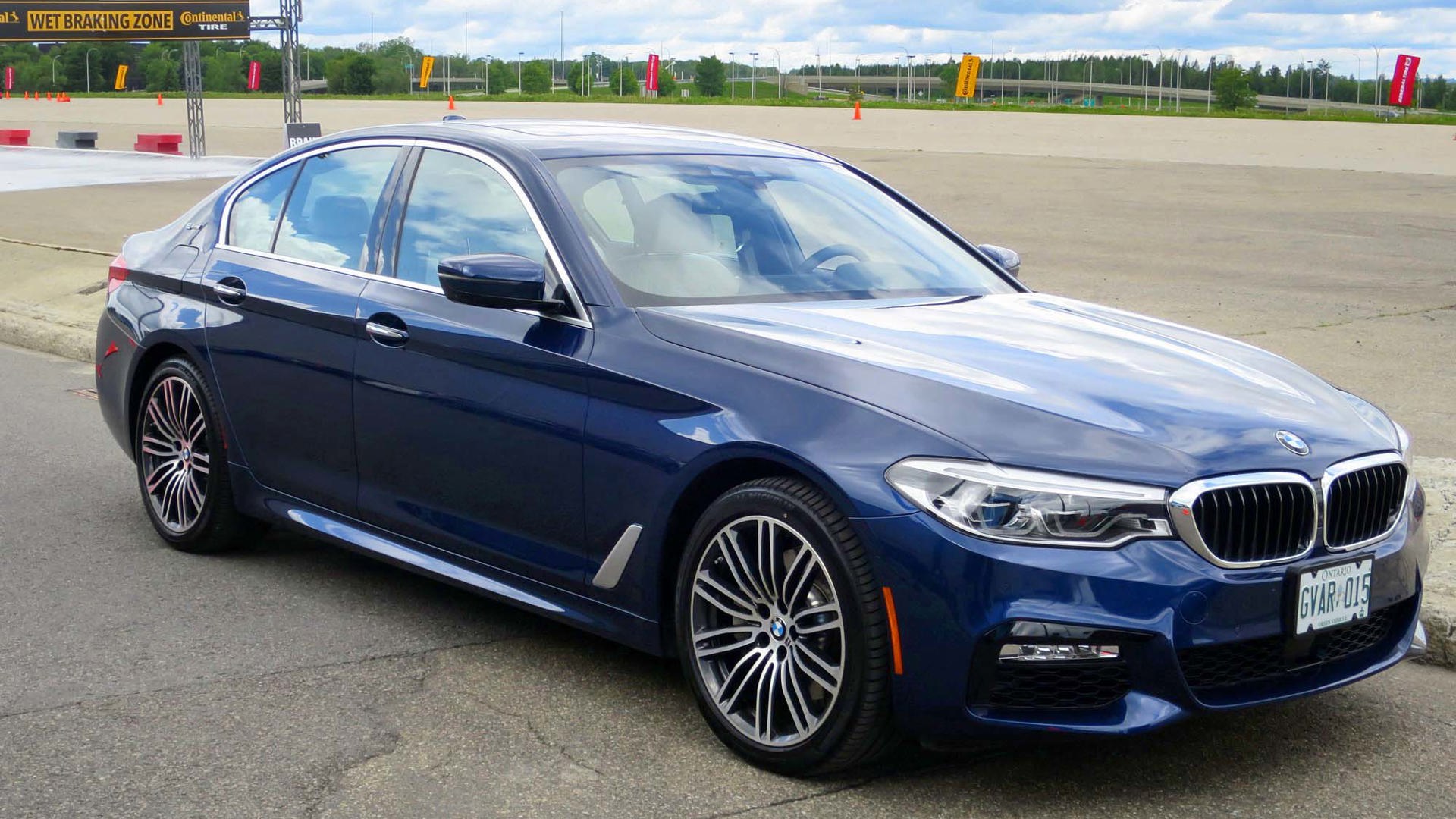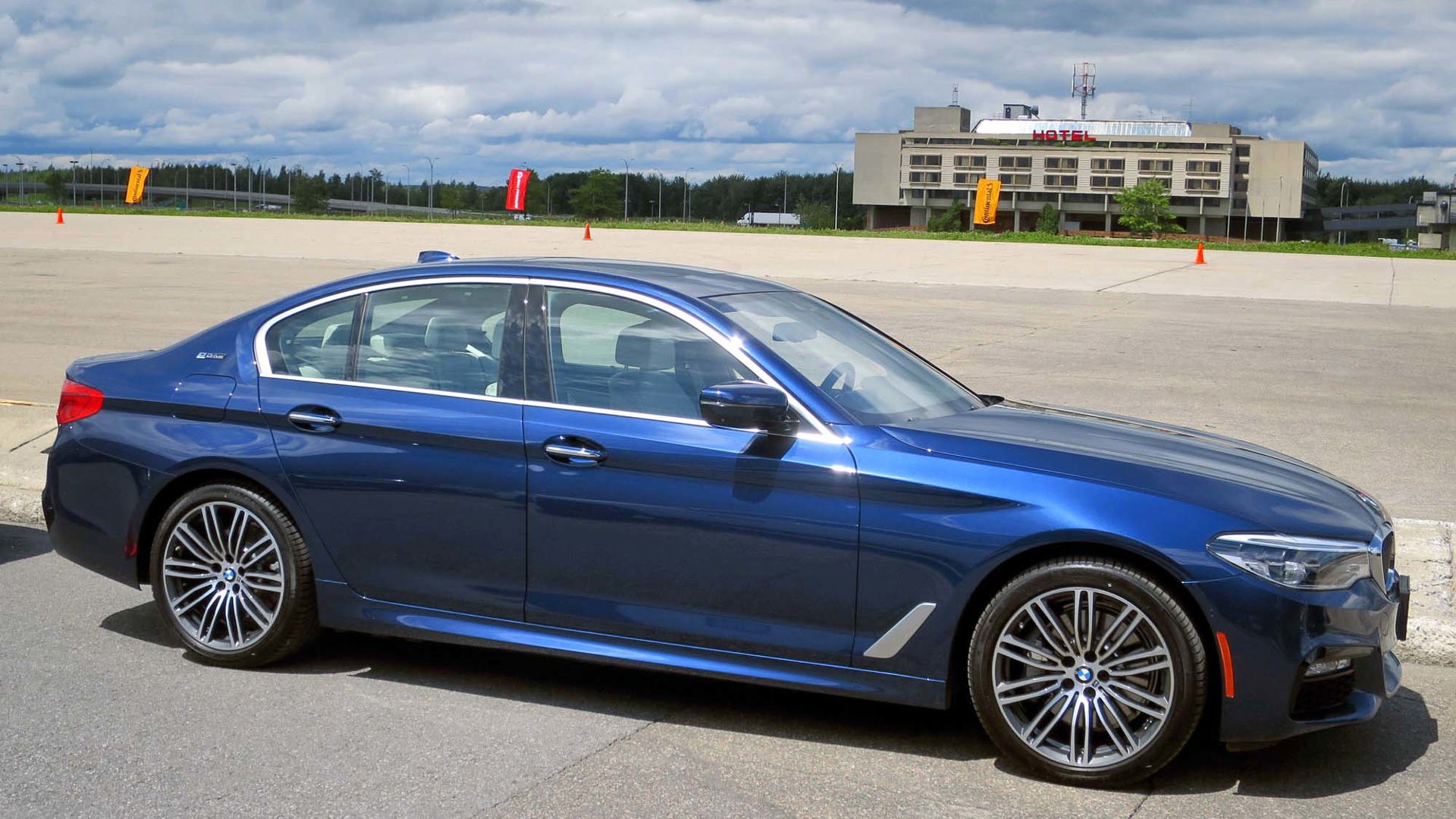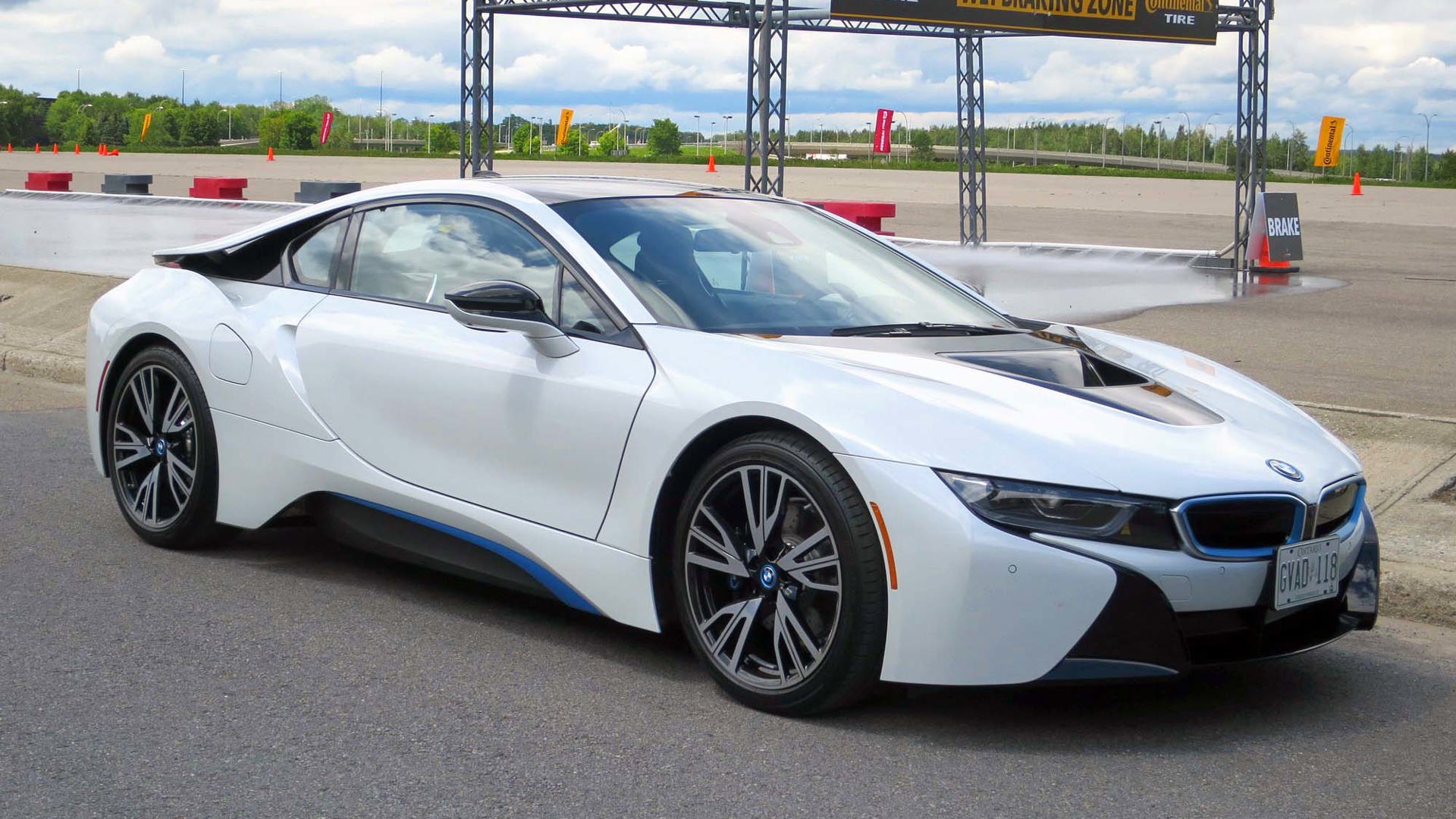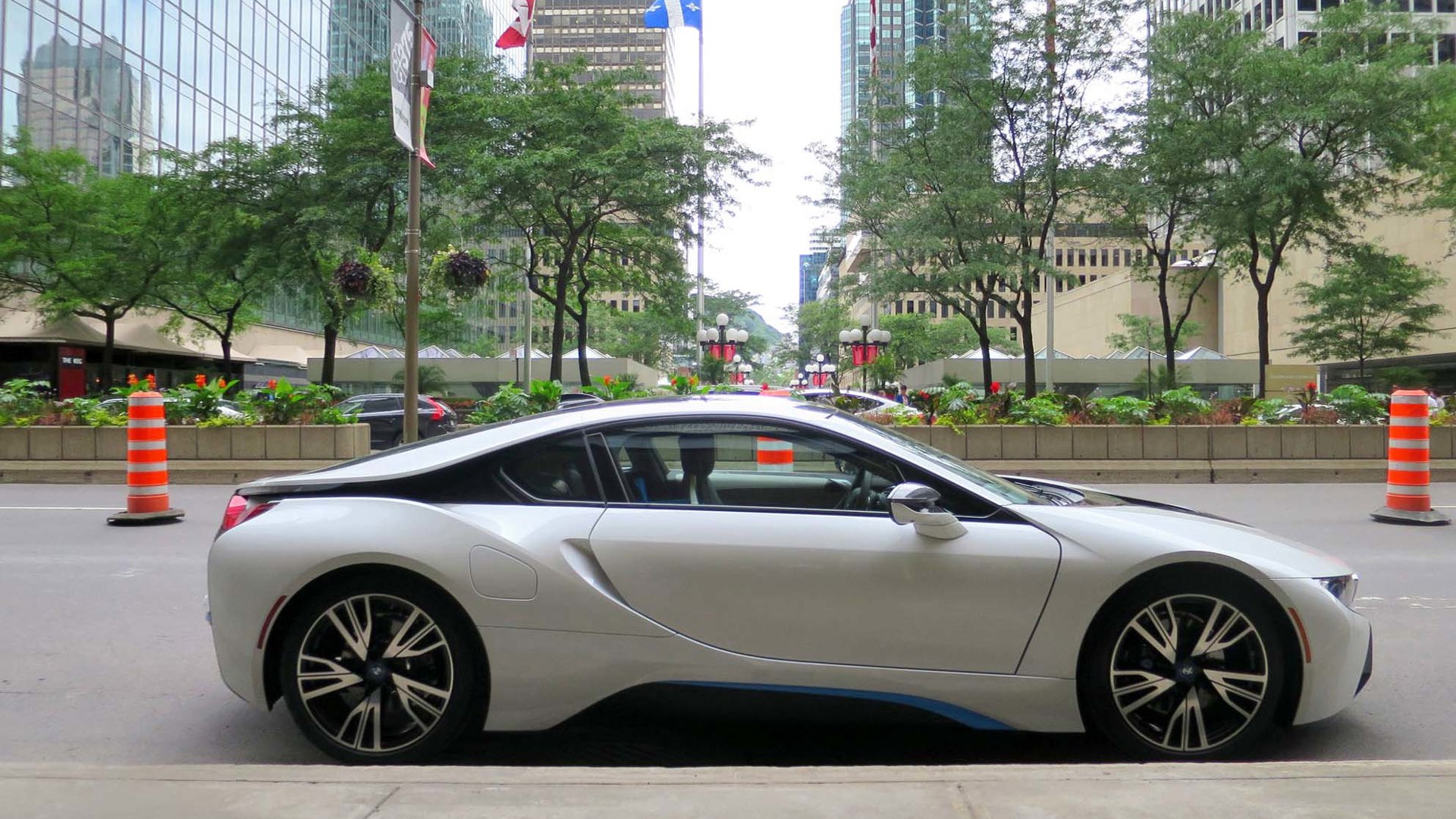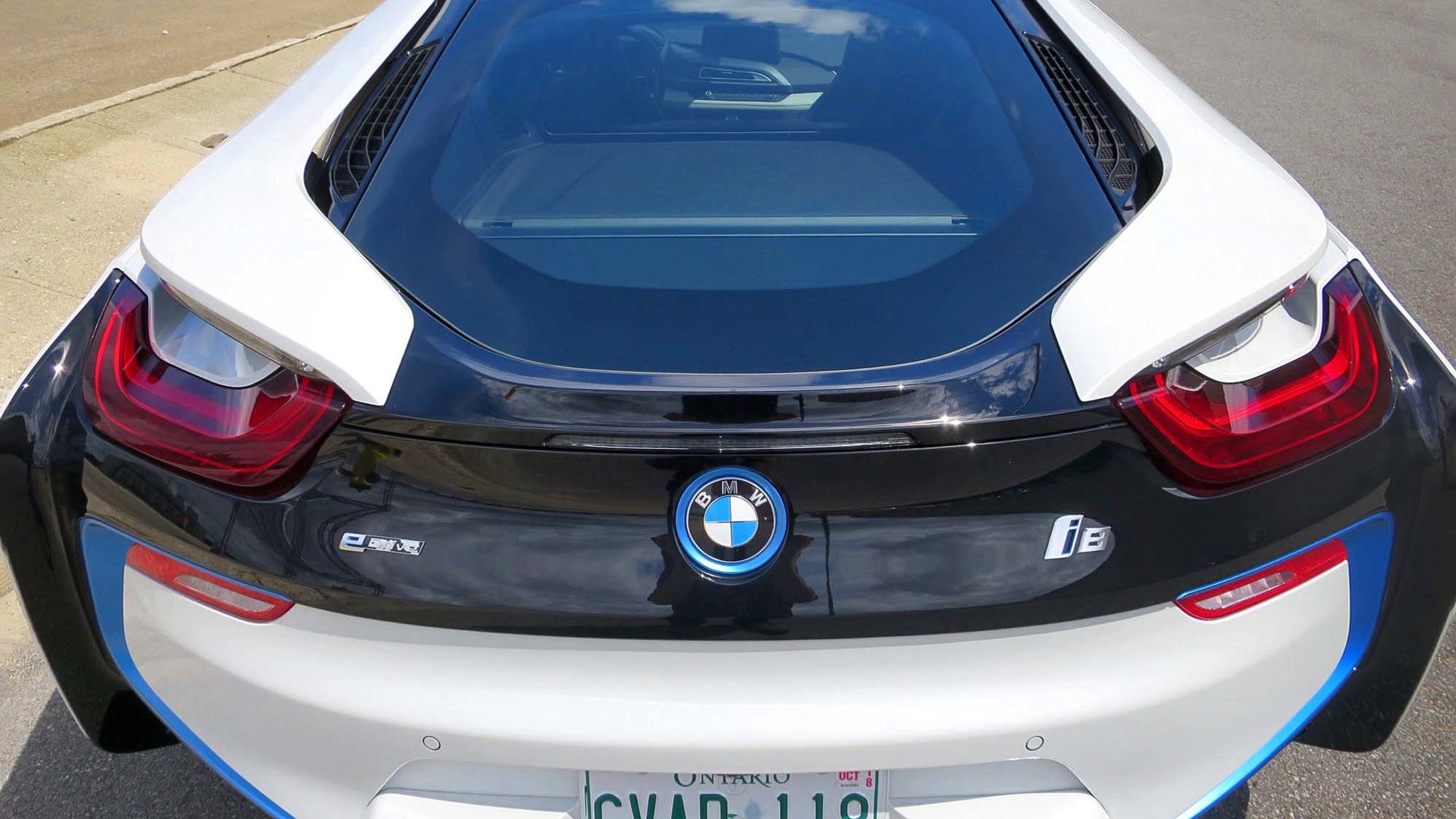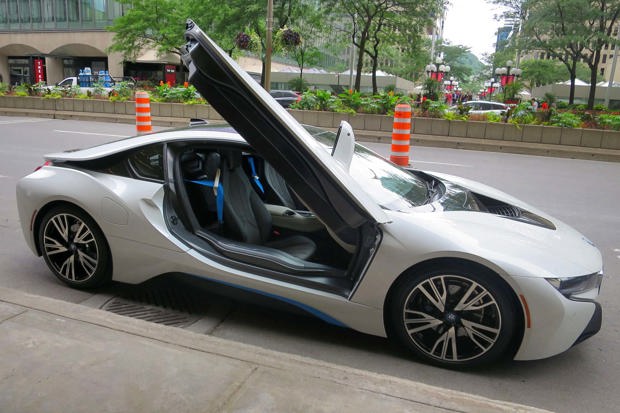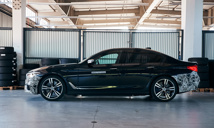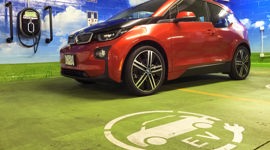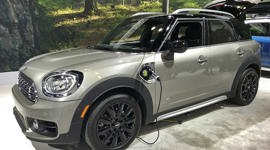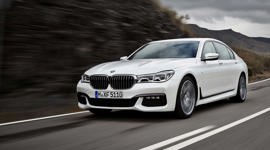On a day when Britain announced that no new vehicles powered with gasoline or diesel fuel would be registered there as of 2040 (following similar announcements by France and Norway), BMW Canada outlined the company’s plans for electric vehicles at a media event in Montreal.
Out with the old, in with the new!
This was also the week leading up to Montreal’s Formula E race at which the champion of this year’s FIA electric vehicle motorsports series would be decided. Veteran Canadian Racer Patrick Carpentier was at the BMW event lauding the Formula E Championship series, and additionally, assembled press was given an overview of the company’s electrified models and a quick introduction to the new 2018 Mini Cooper S E Countryman ALL4 (E for electric, that is).
You get the picture. Electric is figuring prominently these days and to underscore how seriously BMW takes this development, representatives outlined how the company’s electric future is expected to unfold over the next five years. Supporting the formal presentations, examples of BMW’s current electrified fleet were available for sampling on the road. These included the i3 Battery Electric Vehicle (BEV) and the company’s available Plug-in Hybrid Electric Vehicles (PHEVs) in the form of the i8, 330e, 530e, 740Le, X5 40e, and the Cooper S E Countryman mentioned above.
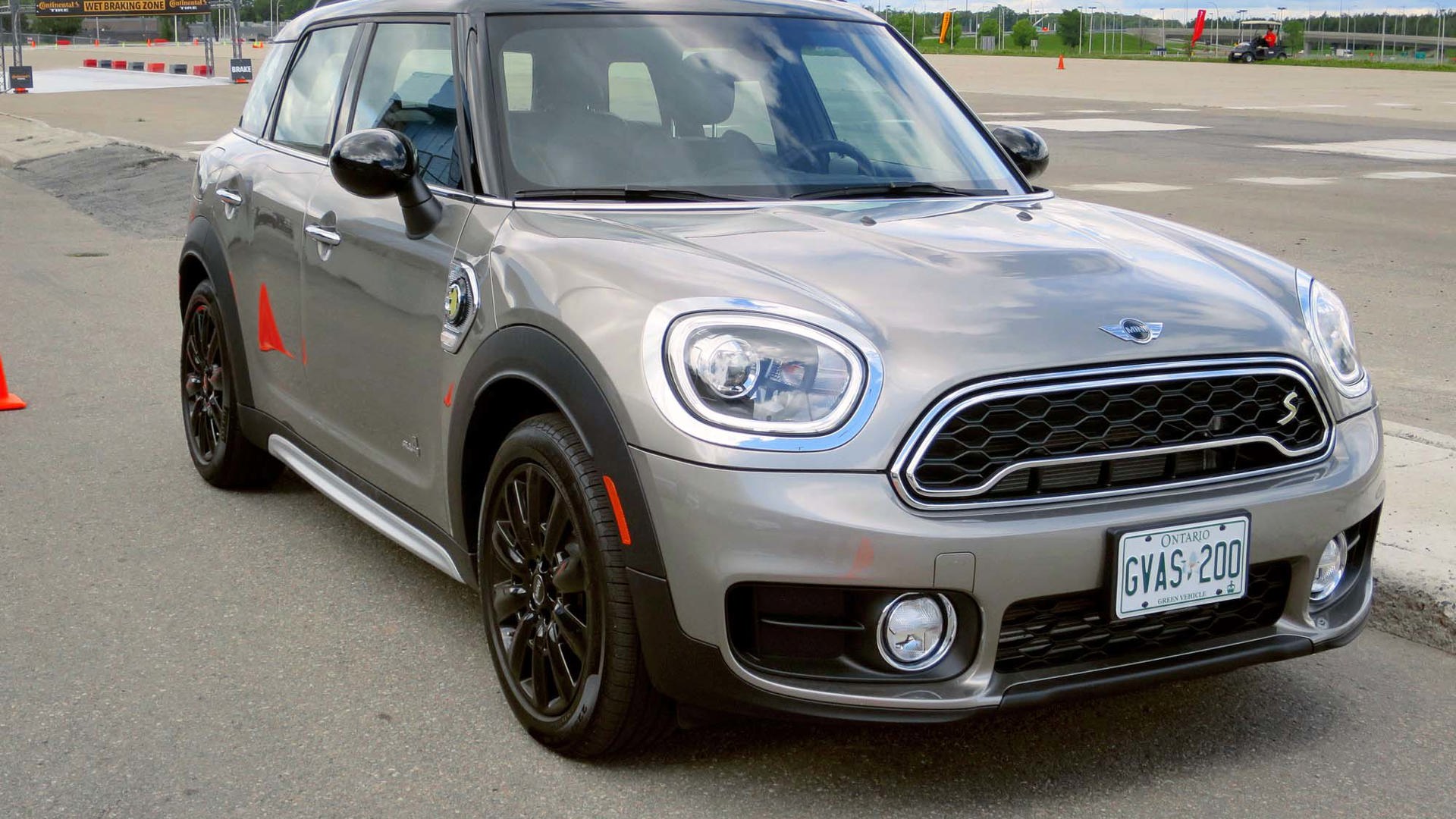
While customers aren’t exactly beating a door to electric vehicles yet (about one percent is the overall market penetration, we were told), there is definitely increased interest in Canada. With governments both mandating more EV availability and in some cases offering generous financial and on-road incentives (HOV lanes, special parking areas, free charging), there is both a push and a pull towards electrification. In Quebec, for example 3.5 percent of vehicles sold must be electrified by 2018; rising to 20 percent by 2025. In Ontario, the highest financial incentive in North America provides $14,000 towards the purchase or lease of BEV models and up to $8,460 toward the cost of PHEV models. The $43,490 2018 Mini Cooper S E Countryman, for example, is eligible for a $7,730 rebate in Ontario, $4,000 in Quebec and $2,500 in British Columbia.
In order to better comply with new regional, national, and international standards BMW is developing electronic control modules in-house, and likewise the motor and battery technologies required for EVs. The goals are to reduce vehicle weight by 20 percent, increase power by 25 percent and reduce cost by 30 percent. By 2025, says BMW, 20 percent of all its vehicles built will be electrified.
BMW has already announced a MINI BEV three-door hatchback for 2019, an X3 BEV is scheduled for 2020, and in 2021 the so-called “iNEXT” arrives (we have yet to be told exactly what vehicle specification this will be, other than that it will be the next “i” model after the i3 and i8). We do know that the iNEXT will be a crossover Sport Activity Vehicle of some type, and as described by BMW, will be a “game changer” for the company. Having determined (also in-house) that the average daily distance driven is 47 kilometres, this number informs a target for PHEVs to travel on battery alone. Additionally, BMW is aiming for a BEV range of 320 km at a price under $45,000.
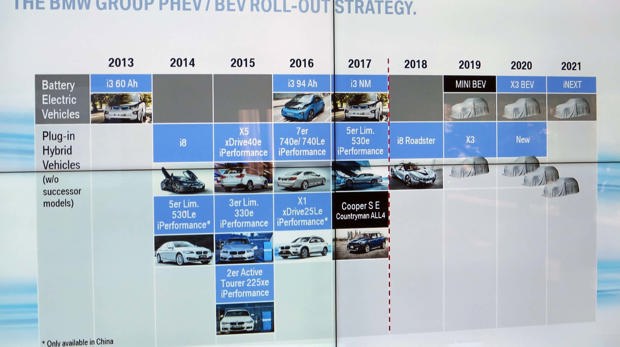
However, while the 2018 Cooper S E Countryman, for instance, offers a decent combined fuel consumption rating of 8.6 L/100km, its electric range is only 19 km, far short of the 47 km average daily commute (or drive) referred to earlier in the presentation. The X5 40e has a battery range of 23 km, as do the 330e, 740Le, and i8. The 530e will run for 24 km on electric only. Frankly, these are not particularly impressive numbers, I think you’ll agree. What they mean in practice is that with a full charge, these PHEV models can be driven from 19 to 24 km on battery alone, after which they revert to a hybrid gasoline/electric system (which admittedly delivers better fuel economy than the same models without electrification).
Driving the vehicles as hybrids, of course, considerably extends their range and will partially recharge the battery, but not fully. For that, you’d need to plug the car into a charging station of some form. Is it worth the hassle to regularly plug your MINI in for up to 19 km EV range? Time will tell.
These vehicles (except for the i3 and i8), explained BMW representatives, are built on older platforms that have been adapted to the requirements of plug-in electric technology, and this compromises their potential EV performance even though they do offer EV driving and purchasing benefits for consumers. Furthermore there is a price premium on PHEVs to be considered, regardless of their EV range, which would, however, be mitigated partially or fully by incentives if they are available. In my view, if you can get the PHEV version of a vehicle for pretty much the same price after incentives as the similarly equipped non-PHEV version, it’s a no-brainer.
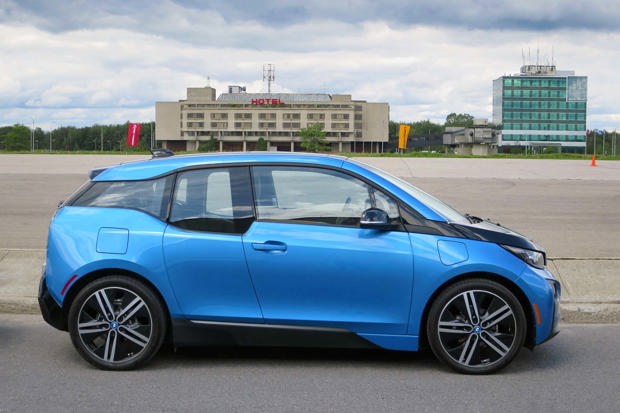
National Manager for Product Planning BMW Canada Matthew Wilson explains that the industry is currently in a transitional phase. Companies have been unclear whether their direction will be fully BEV, PHEV or even FCEV (fuel-cell electric vehicle, powered by hydrogen). Not to mention the precarious future of diesel after various recent scandals. Has BMW announced they’re abandoning the internal combustion engine? No. But needing to respond to the marketplace and to regulatory pressures, car companies are understandably blending current platforms with various forms of electrification, as new, more efficient platforms take many years to develop. Notwithstanding, incentives for consumers certainly help to get these vehicles on the road, which can’t be a bad thing. British Columbia, Ontario, and Quebec are where you see the biggest market penetration of electrified vehicles in Canada; and not coincidentally, these are the provinces with incentives.
At the present time, therefore, it’s only the i3 BEV that offers a glimpse into the pure electric future of BMW. It was purpose-designed from the ground up (the first of the BMW i division), and offers owners useful range, complete freedom from gasoline, and the ability to drive with zero emissions. The i8 is also a purpose-designed vehicle – in this case a plug-in hybrid – but it has different goals. It’s a showcase for the company’s e-technology in an ultra-high performance, clean, fuel efficient, and lightweight exotic car. As far as BEVs go, the Mini BEV will follow (although its platform – adapted or new – is as yet undisclosed) as will the X3 BEV as mentioned above.
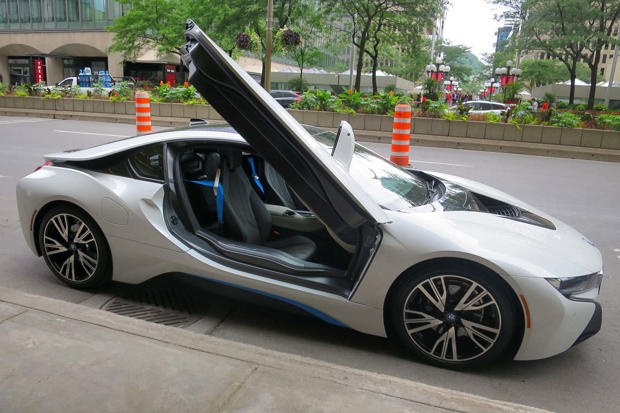
Although six electrified vehicles were present at the Montreal event, each journalist was only able to drive two of them over a brief loop in and out of downtown Montreal. In my case it was the new Mini and the i8; definitely a study in contrasts (although they feature the same three-cylinder engine!).
The Mini felt nimble and responsive as Minis are supposed to, although its size and mass are evident in comparison with the more svelte coupe. Automatic transmission only in this version, which does remove one of the joys of driving this brand in my opinion. Great seat for the driver, all-wheel drive useful in the winter, PHEV system helping with fuel economy. A full road test coming up shortly.
No size and mass observations with the i8 – nimble and responsive squared. Has a back seat! (Well, sort of....) Truly a fabulous looking vehicle packed with just about everything BMW knows how to do. I reckon you could do a nice road trip in one of these, but we were in stop-and-go traffic half the time.
A small but powerful and fuel-efficient engine driving the rear wheels; strong electric motor driving the front wheels, the i8 exudes sex, to put it bluntly.
If this is the electrified future, bring it on!
